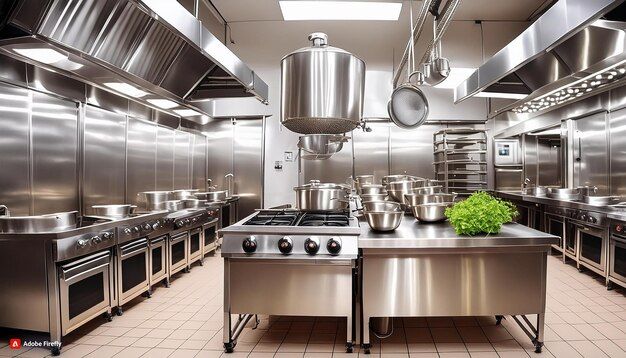Introduction: The Stainless Revolution
Stainless steel has become the gold standard in kitchens around the world, but its journey to the top is a story of innovation, science, and changing lifestyles. From humble beginnings to a symbol of modernity, stainless steel’s rise is rooted in its unique blend of practicality and style. In this blog, we explore why stainless steel became the kitchen’s favorite—examining its history, hygiene, durability, versatility, and the sleek appeal that continues to inspire chefs and home cooks alike. Discover how this remarkable material transformed the way we cook, serve, and enjoy food every day.
1. A Brief History: From Invention to Icon
The story of stainless steel began in the early 20th century, when metallurgists sought a rust-resistant alloy for industrial use. The breakthrough came in 1913, when Harry Brearley of Sheffield, England, discovered that adding chromium to steel created a material that resisted corrosion and staining. This innovation quickly found its way into kitchens, where the need for durable, hygienic cookware was growing. Over the decades, stainless steel became synonymous with progress and quality, replacing traditional materials in everything from cutlery to cookware. Today, it stands as a testament to human ingenuity and the pursuit of better living through science.
2. Hygiene & Safety: Clean Cooking Every Time
One of the biggest reasons for stainless steel’s popularity is its exceptional hygiene. Unlike porous materials, stainless steel does not harbor bacteria, odors, or stains. Its non-reactive surface ensures that food retains its true flavor and color, making it ideal for a wide range of dishes. Stainless steel is also easy to clean—resistant to rust, corrosion, and harsh detergents. This makes it a favorite in both home and professional kitchens, where safety and cleanliness are paramount. The peace of mind that comes with using stainless steel is a key factor in its enduring appeal and widespread adoption.
3. Durability: Built to Last Generations
Stainless steel is renowned for its strength and longevity. Unlike other materials that may chip, crack, or warp over time, stainless steel maintains its integrity through years of heavy use. Its resistance to heat, impact, and corrosion means that pots, pans, and utensils can be passed down from one generation to the next. Many families treasure their stainless steel cookware as heirlooms, a testament to its lasting value. This durability not only saves money in the long run but also reduces waste, making stainless steel an environmentally responsible choice for conscious consumers.
4. Versatility: The All-Purpose Performer
Few materials can match the versatility of stainless steel in the kitchen. It is suitable for all types of cooking—boiling, frying, sautéing, baking, and even steaming. Stainless steel cookware works on all heat sources, including induction, and is often designed with layered bases for optimal heat distribution. Its neutral appearance complements any kitchen décor, while its compatibility with other materials (like glass lids or aluminum cores) enhances performance. Whether you’re a novice or a seasoned chef, stainless steel adapts to your needs, making it the go-to choice for a wide variety of culinary tasks.
5. Modern Appeal: Sleek, Stylish, and Sustainable
Stainless steel’s sleek, mirror-like finish has made it a favorite in contemporary kitchens. Its timeless look blends seamlessly with both classic and modern designs, adding a touch of sophistication to any space. Beyond aesthetics, stainless steel is 100% recyclable, making it a sustainable option for eco-conscious households. Manufacturers continue to innovate, offering new finishes, ergonomic designs, and multi-functional products that keep stainless steel at the forefront of kitchen trends. Its combination of beauty, practicality, and environmental responsibility ensures that stainless steel will remain the kitchen’s favorite for generations to come.
